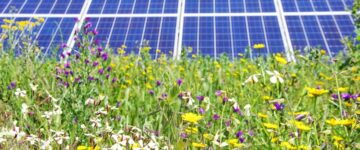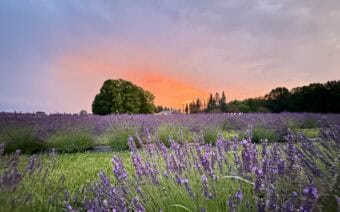
September 8, 2022
CHILTON – Founded in 2012, those behind Leaves Inspired Tree Nursery said they’ve spent the past decade offering long-term solutions to unexpected problems.
The family-run company – steered by brothers Bill and Jared Stroobants and their father Keith Stroobants – is housed on a plot of farmland three miles west of Chilton that has been in the family for years.
Bill Stroobants said the intent behind the creation of Leaves Inspired was to fill the hole left after the loss of so many ash trees in the state – due to the invasive emerald ash borer – and to educate their clients about underutilized tree varieties that thrive in this area.
Stroobants, a 2009 University of Wisconsin-Stevens Point (UWSP) graduate and president of the company, said combining his forestry degree, his brother’s wildlife management degree (also from UWSP) and his father’s years of business ownership made for a well-rounded team.
He said the idea behind the 47-acre nursery from day one was simple.
“We wanted to stay small and do as much as we can in our state,” Stroobants said. “We pretty much grew deciduous trees here. We tried growing more than 300 varieties of trees, but we narrowed it down to about 140 we carry. We try not to get too heavy in maples because they are overplanted here as well.”
Various offerings
Stroobants said the company mostly sells directly to municipalities that are replacing trees that have been lost to the ash borer – with 70% of its annual clientele being municipalities.
“(We provide) some for county parks, and we provide a lot of trees for new building (projects), as well,” he said. “We’ve worked with Eau Claire for a long time, Waukesha, Neenah, Menasha, DePere, Fond du Lac, Oshkosh. It’s hard for us to produce enough to get outside of the state, but we provide some to Chicago and to the Twin Cities.”
Stroobants said some varieties the nursery grows that clients in this area may be unfamiliar with, include hackberry, Kentucky coffeetree and catalpa.
Stroobants said when purchasing trees, clients are often looking for a variety of attributes – including disease-resistant, vibrant foliage, seedless, flower-producing and maturing at a particular size.
“You don’t want a tree that gets too big for a specific area, especially as things are getting tighter,” he said. “The trend is for trees to have a smaller or narrower mature size.”
Stroobants said the Leaves Inspired team oftentimes advises clients on tree options.
“We meet with urban foresters a few times a year and that’s when we discuss what’s new and different things they are thinking and what we’re thinking,” he said. “A lot of foresters and cities have developed a list of trees that are approved by a city. If a homeowner is planting a tree on a boulevard, it must be approved by the city. We work with 50 cities annually and sell to garden centers and contractors, too. Cities make up 70% of our business.”
Trees are dug up and can be delivered by the Leaves Inspired crew, however, Stroobants said, planting is the responsibility of the client.
During the busy seasons – which are spring and fall – Stroobants said he, his brother and his dad sometimes put in 90-hour work weeks, with the occasional help of family and friends on the weekends.
“We worked two months straight last digging and planting season,” he said “You have to dig out as much as you can in a certain amount of time. March is busy because of the prepping of the field and prepping the trees we bring in. We can bring trees in early, top prune and bottom prune them (for a more compact head) and have them organized.”
At Leaves Inspired, Stroobants said about half of their stock is dug and delivered bare root and the other half is ball and burlap.
“Bare root is nice because there is no soil on the tree when you dig it, and moving it and planting it is so much easier,” he said. “A bare root tree weighs seven pounds and a ball and burlap tree weighs 150 pounds. Bare root is less expensive, but you have to be careful the roots don’t dry out. You can stick a ball and burlap tree on a pile of mulch for months until you’re ready to plant it.”
Stroobants said the team cuts back on their hours November through February, but there is always work still to do.
“We’re planning, we’re buying, we’re researching and we go to different trade shows,” he said. “There’s a lot of projects we save to keep us busy during that time.”
A good fit
Stroobants said co-owning an environmentally friendly business has proven to be a good fit for his family.
“It’s nice being out there,” he said. “You get satisfaction out of taking care of this (land and these trees) and putting everything into it. A tree is not perfect – that’s the one frustrating thing. No tree is perfect, but you make it as good as you can. It’s a living thing and they don’t all survive, and you don’t always know why. But it’s fun with the different varieties we have and trying to encourage people to plant them.”
 New North Summit showcases ‘the power of collaboration’
New North Summit showcases ‘the power of collaboration’ Solar plant shines light on process, benefits
Solar plant shines light on process, benefits





